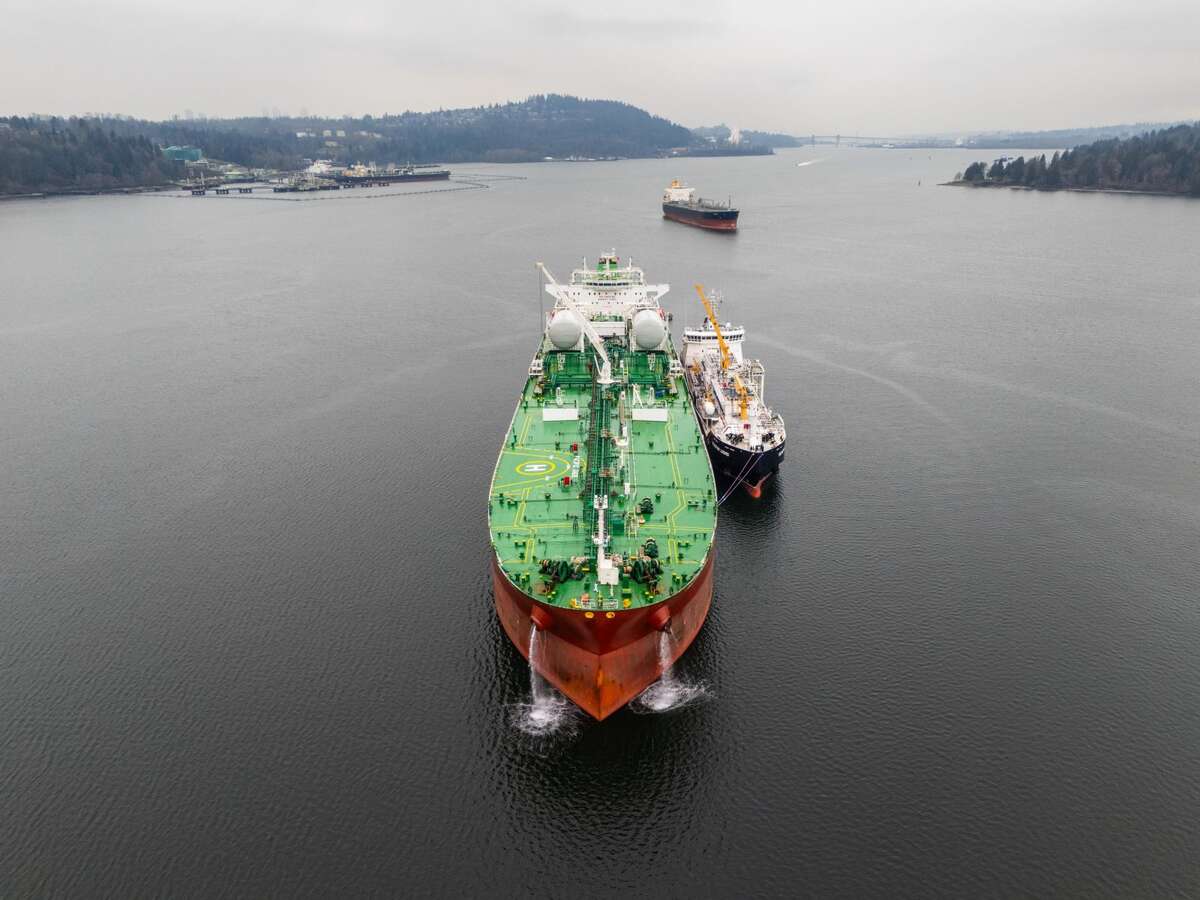Consider it one small but significant course correction in maritime transportation’s decades-long net-zero emissions voyage.
Small because it is just one successfully competed refuelling operation; significant because it is the first of its kind in Canada; more significant for B.C. because it occurred on the country’s West Coast; more significant still for Metro Vancouver because it occurred in the Port of Vancouver.
Seaspan Marine’s January 30 ship-to-ship liquefied natural gas [LNG] bunkering to a tanker at anchor provides evidence that innovative Canadian enterprise is alive and well and not reliant on other more dynamic and productive economies and business communities.
We need all the evidence we can get, especially when it comes to marine technology.
Canada long ago lost the maritime shipbuilding plot. It was once one of B.C.’s largest employers, but shipbuilding ran aground in the 1980s and was all but sunk in 1990 when Brian Mulroney’s Progressive Conservative government torpedoed the federal government’s $500 million Polar Class 8 icebreaker contract, which had been awarded to North Vancouver’s Versatile Pacific Shipyards in 1987.
It’s not the only jurisdiction that abandoned its shipbuilding manufacturing and design expertise and opened the door to China and other hungrier Asian countries to outmaneuver the West and corner the global market.
Consider, for example, that the U.S., was the world’s No. 1 shipbuilder in 1975. Today, as the U.S. Trade Representative’s investigation into China’s targeting of maritime, logistics and shipbuilding reveals, it now ranks 19th.
“We build less than five ships each year, while the PRC [China] is building 1,700 ships,” said Ambassador Katherine Tai.
B.C. lost more than the Polar 8 contract. It lost much of its top-end naval architect and design expertise talent pool to competing shipbuilding hubs.
Canada’s National Shipbuilding Procurement Strategy [NSPS], which began in 2010, has provided at least a first step in slowing the exodus of what is left of that talent pool.
Seaspan has been one of the beneficiaries of the NSPS. Its original potential slice of the estimated $50 billion NSPS pie was just over $20 billion.
It has also partnered with the Haisla Nation in the HaiSea partnership that has launched the world’s first fleet of electric harbour tugs, which will service LNG Canada’s Kitimat LNG export terminal.
Seaspan’s HoloShip virtual reality platform, launched in early 2023, is aimed at improving ship design efficiency through virtual reality headsets and 3D ship design modelling.
So, Seaspan’s move into LNG fuelling for commercial shipping through its Seaspan Energy subsidiary is another sign of innovative maritime expertise returning to Canada’s West Coast.
That is good news on several levels, including marine transportation’s complex and costly energy decarbonization transition. See Substack Shipping News analysis of that size and challenge for maritime shipping [https://bit.ly/3Z7eyDg].
Seaspan’s ship-to-ship LNG bunkering breakthrough was performed by the Seaspan Lions, one of three LNG bunkering vessels in the company’s fleet.
As Seaspan Energy president Harly Penner said, the successful LNG refuelling operation “marks the introduction of a low-carbon fuel alternative from the Port of
Vancouver and beyond. With two of our LNG bunkering vessels now operational and our first bunkering in the books, our message to ship owners globally is that we now offer an accredited LNG bunkering option here in Vancouver.”
More good news there for commercial shipping and its decarbonization aspirations because LNG is the odds-on favourite lower carbon propulsion transition fuel for the global container shipping fleet [https://bit.ly/4eX219C].
And progress in that transition depends on a committed and extensive network of ship refuelling infrastructure.
Getting out ahead of that transition will pay dividends for the Port of Vancouver and the rest of B.C.
www.linkedin.com/in/timothyrenshaw
timothyrenshaw.substack.com
@trenshaw24.bsky.social
@timothyrenshaw











